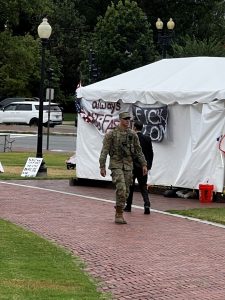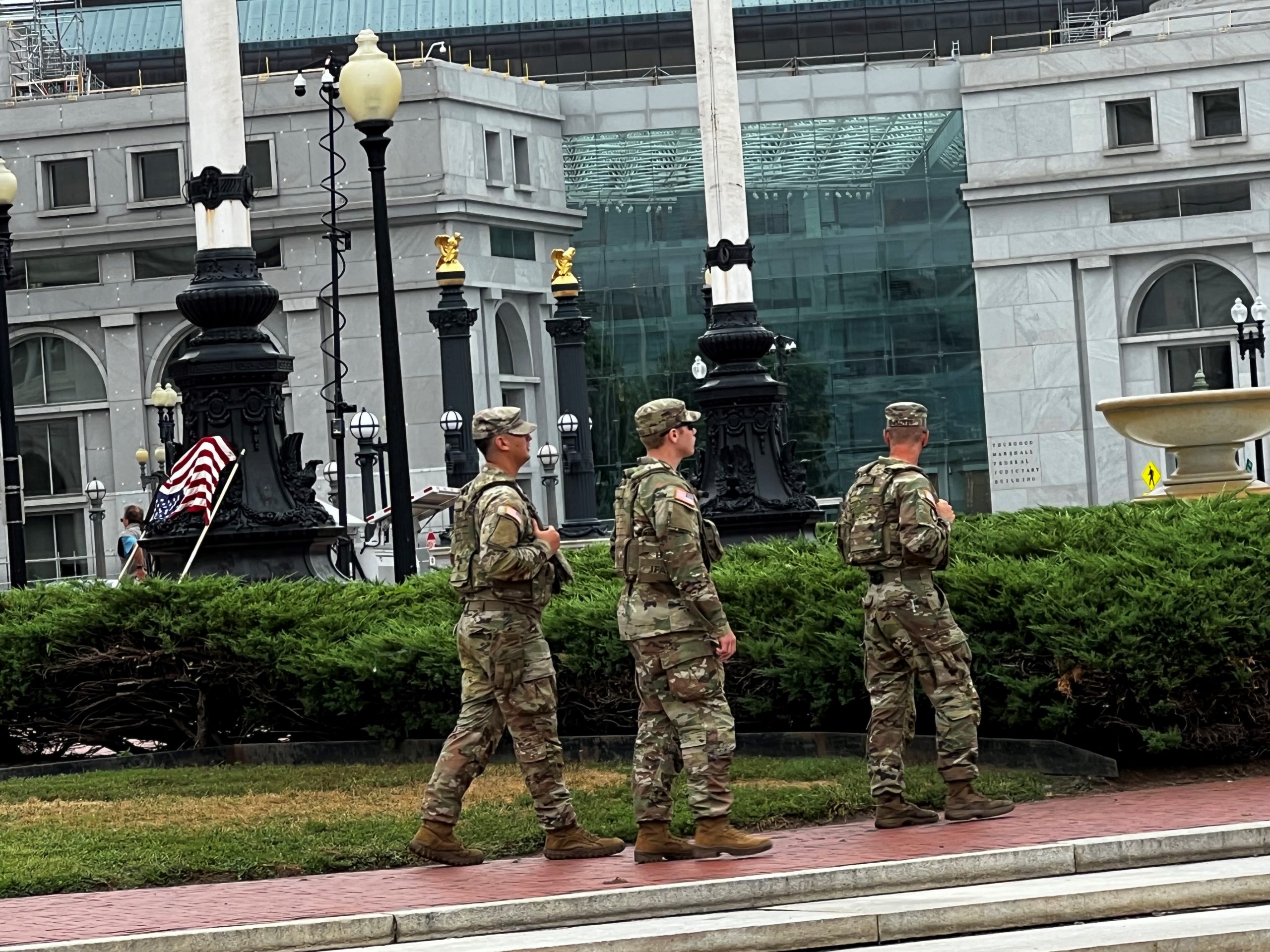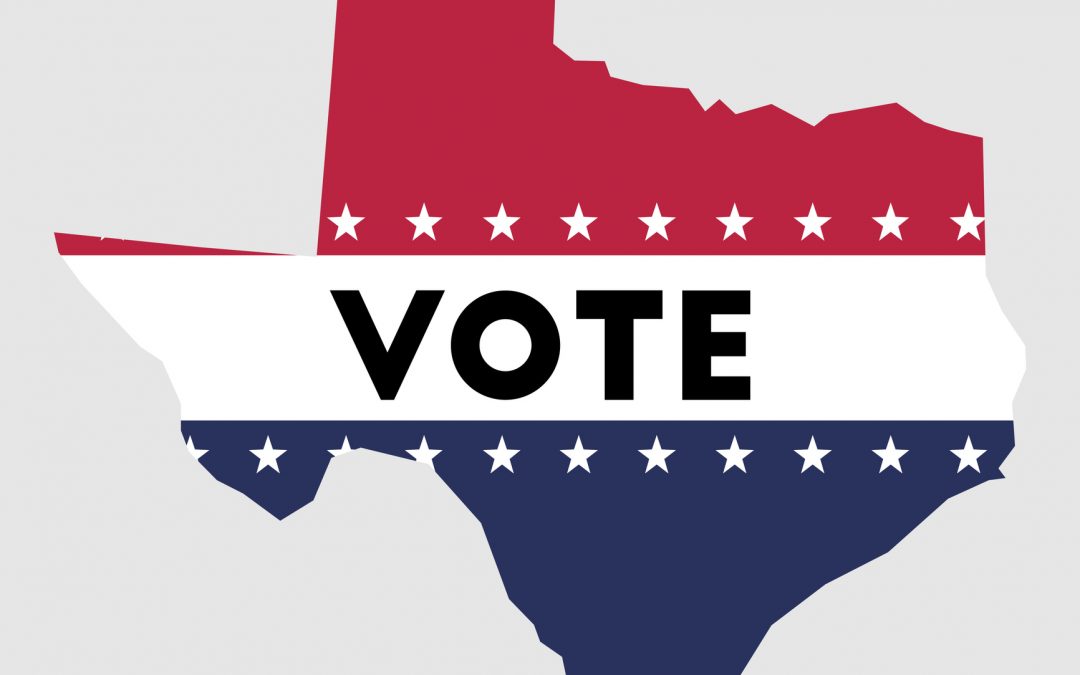By Mel Wilson, NASW Senior Policy Advisor
In a sweeping and provocative move, President Donald Trump initiated a federal takeover of Washington, D.C.’s Metropolitan Police Department in August 2025, citing a “crime emergency” -despite data showing a significant drop in violent crime across the city. City residents and leaders in the civil and human rights community argue that Trump used a false pretext to justify this intrusive disregard for the city’s ability to manage its law enforcement and public safety departments. Moreover, the pretext of “crime emergency” was designed to mask assertion of near-absolute federal power in Washington, D.C. – undermining the District’s autonomy under the Home Rule Act.
The bogus claim of a crime emergency in the district deserves further analysis. First of all, it should be stipulated that under the Home Rule Act, the president can indeed unilaterally and without providing documentation declare such an emergency and take control of the city’s law enforcement operations.
However, claims of out-of-control rampant crime in the city are patently false. Although the administration’s justifications for federalizing law enforcement are there has been “a surge in violent crime, including homicide and robbery rates higher than any U.S. state,” the data do not support that characterization. As has been widely reported, the District’s violent crime rate has significantly dropped over the past few years. This includes homicides, robberies, and carjacking.
Another observation that discredits the fallacy of unrestrained crime in the city is to point to the murder rates in the District in the late 1980s and early 90s – when Washington, D.C. was derisively called the “murder capital” of the country. The truth is the violent crime rate in D.C. in the 2020s is dwarfed by statistics of 35 or more years ago. For example:
- In 1989, there were 434 homicides, with a rate of 85 per 100,000 residents.
- Those numbers peaked in 1991 with 482 homicides (at a staggering 6 per 100,000 people), the highest ever recorded in D.C.
This compares to a homicide rate of 187 homicides in 2024 which represented 27.3 homicides per 100,000 people. The comparison shows a huge drop in homicides over the years.
The reduction in crime was achieved by conscientious and professional policing and public safety policies managed by District officials – and decidedly without the presence of a federalized national guard paroling the streets. Unfortunately, the media often underreports these data when analyzing the validity of Trump’s crime emergency assertions.
Militarization

A National Guardsman patrols near a protest camp in front of Union Station in Washington, D.C., about three blocks from NASW headquarters.
The reference to the national guard deployment to the District introduces serious questions about Trumps federalization strategy – in terms of its authoritarian overreach. The specter of combat ready military personnel riding in Humvees patrolling the nation’s capital can be intimidating. But to those who are strongly opposed to the military presence, Trump’s deployment of the national guard represents the ultimate violation of individual freedoms. Many D.C. residents are offended by a military presence because it symbolizes federal overreach given the flimsy justification for federalizing the military.
Critics of the military intervention argue that choosing Washington, D.C. – a city without full voting representation in Congress – sets a troubling precedent. Given that Trump has previously targeted cities such as Chicago, Baltimore, Philadelphia, Los Angeles and New York for federalizing their law enforcement departments, suggests that the District is the Trump Administration’s test on the limits of its executive powers. Similarly, it is not overlooked that the cities he has targeted are all have mayors who are Democrats and African Americans.
At present, there are s800 National Guard troops on the street of D.C. From a law enforcement standpoint, these soldiers are not trained for policing, putting in question their capability to improve public safety.
Compounding the situation is the recent Trump Administration’s announcement of a plan to bolster the existing national guard contingency with troops from West Virginia, Ohio, and South Carolina – all “Red” states. It goes without saying that this is an ill-advised escalation of the Trump administration’s overreach. To make matters worse, this decision also has significant political and racial overtones. The fact that most out-of-state guardsmen are white should not be overlooked.
Criminalization of Unhoused People
The level of vitriol directed by Trump toward vulnerable populations in the District when he announced his D.C. police federalization plan was outrageous in its tone and content. In making the statement, Trump said the following:
“Our capital city has been overtaken by violent gangs and bloodthirsty criminals, roving mobs of violent youth, drugged-out maniacs and homeless people, and we’re not going to let it happen anymore.”
Not only were his words wildly untrue, but they also indicated a complete disregard for D.C.’s right to self-governance and opened the door to criminalizing vulnerable populations – particularly the homeless.
Many advocates for the homeless and for those with behavioral health disorders were particularly taken aback when – during the same press conference – Trump demanded that unhoused people “move out” of the District of Columbia.
He said those words with almost venomous contempt for their very existence. Such language not only shows deep insensitivity to the plight of the unhoused but also conveys a message of dehumanization of marginalized people with mental health and substance use disabilities.
Studies show that dehumanization leads to denial on the part of the general public of empathy and dignity towards unhoused people. As a result, they are invariably portrayed as unpredictable, dangerous, or morally flawed, rather than as individuals who deserve care and respect.
What makes President Trump’s disdain for unhoused residents of the District of Columbia even more infuriating is that his press secretary recently stated that federalized law enforcement officers have been ordered to give unhoused people living in encampments the option of either going to a homeless shelter or a behavioral health treatment facility. If they fail to do so they will be jailed.
The cruel ironies of this policy are that shelters in Washington, D.C. are already overcrowded and the city has limited funds to expand them. There is also a paucity of behavioral health treatment facilities and most such facilities have long waitlists. This makes administration’s options to avoid jail disingenuous at best and cynical at worst.
If the Trump administration truly for increased homelessness services – including affordable housing – Trump would not have enthusiastically signed off on a budget bill that drastically cut Medicaid. The Medicaid cuts alone will significantly worsen conditions that perpetuate homelessness.
Insertion of ICE Law Enforcement Officers
As the mobilization and deployment of federal law enforcement personnel for duty in the district moved forward, the inclusion of U.S. Immigration and Customs Enforcement (ICE) officers raised alarms and suspicion within the immigration rights and civil rights communities. Because of D.C.’s unique status as a federal district – lacking full autonomy over its governance – ICE leadership has increasingly and opportunistically leveraged this configuration to expand its operational footprint.
There are those who argue that the federalization of the D.C. police force will serve as a strategic conduit for ICE to advance mass deportation initiatives, bypassing local resistance and sanctuary city policies. For immigration reform activists, this evolving relationship between federal immigration enforcement and local policing raises urgent questions about civil liberties, democratic oversight, and the future of immigrant communities in the nation’s capital.
What is apparent is that as part of Trump’s federalization of D.C.’s law enforcement apparatus, the inclusion of ICE agents was designed to blatantly undermine the District’s sanctuary city principles. This is despite longstanding local policies limiting cooperation with federal immigration authorities.
To the dismay of the immigration community Metropolitan Police Department officers were ordered to share information with ICE during routine traffic stops, even when individuals were not charged with any crime. Opponents say that this decision weaponized immigration enforcement to intimidate immigrant communities and suppress local autonomy.
Conclusion
We are again – as a nation – reacting to an unmistakenly autocratic power grab by Trump. Believing that the steps to federalize the District of Columbia’s law enforcement apparatus is simply a local issue would be misreading the facts.
In reality, it is in line with the emerging Trump objective of amassing power and control over not only federal functions and power, but also that of state and local governments. All of which is emblematic of an embrace of an executive philosophy that some analysts are calling the “Trump doctrine” of centralized control.
We must be cautious about misinterpreting Trump’s motivations vis-à-vis federalizing D.C.’s policing and public safety functions. The agenda has little to do with a contrived “crime crisis” and more to do with expanding authoritarian-like powers of the executive branch.
Most will agree that public safety must be a high priority for Washington, D.C. – as well as in all cities and communities in the United States. However, it is important not to fall into the trap of defining public safety as being solely associated with as policing. For that matter, public safety certainly cannot be defined as a deployment of the National Guard in the nation’s capital.What the President and his administration seem not understand is that comprehensive community public safety must also include public health, affordable housing, and a well-funded social safety-net, among other essential supports.
More importantly, with respect to unhoused people – particularly those with serious behavioral health disorders – public safety is not enhanced by criminalizing homelessness. Restoring full funding to Medicaid and affordable housing programs will go a long way in improving public safety. The Trump administration has failed to understand this important intersection.




